Investigation of Fatigue Behavior of ABS and PC-ABS Polymers at Different Temperatures
Abstract
:1. Introduction
2. Experimental Set-Up
Materials and Methods
3. Results and Discussion
3.1. Tensile Behavior
3.2. Fatigue Behavior
4. Conclusions
Author Contributions
Funding
Data Availability
Conflicts of Interest
References
- Park, S.H.; Park, C.; Kim, J.; Kim, T. Derivation of Fatigue Properties of Plastics and Life Prediction for Plastic Parts. In Proceedings of the 2015 World congress on Advances in Civil, Environmental and Materials Research (ACEM15), Incheon, Korea, 25–29 August 2015. [Google Scholar]
- Sauer, J.A.; Chen, C.C. Deformation Modes and Fatigue Behavior in Styrene-Acrylonitrile and Acrylonitrile-Butadiene-Styrene Copolymers. Polym. Eng. Sci. 1984, 24, 786–797. [Google Scholar] [CrossRef]
- Schultz, J.M. Fatigue behavior of engineering polymers. Treatise Mater. Sci. Technol. 1977, 10, 599–636. [Google Scholar]
- Sauer, J.A.; Richardson, G.C. Fatigue of polymers. Int. J. Fract. 1980, 16, 499–532. [Google Scholar] [CrossRef]
- Hertzberg, R.W.; Nordberg, H.; Manson, J.A. Fatigue Crack Propagation in Polymeric Materials. J. Mater. Sci. 1970, 5, 521–526. [Google Scholar] [CrossRef]
- Hertzberg, R.W.; Skibo, M.D.; Manson, J.A. Fatigue Fracture Micromechanisms in Engineering Plastics. In Fatigue Mechanisms; ASTM Special Technical Publication: Philadelplila, PA, USA, 1979; Volume 675, pp. 471–500. [Google Scholar]
- Radon, J.C. Fatigue crack growth in polymers. Int. J. Fract. 1980, 16, 533–552. [Google Scholar] [CrossRef]
- Beardmore, P. Fatigue Behavior of Polymers. In Fatigue Mechanisms; ASTM International: Philadelplila, PA, USA, 1979; Volume 675, pp. 453–468. [Google Scholar]
- Hertzberg, R.W.; Manson, J.A.; Skibo, M. Frequency sensitivity of fatigue processes in polymeric solids. Polym. Eng. Sci. 1975, 15, 252–260. [Google Scholar] [CrossRef]
- Arad, S.; Radon, J.C.; Culver, L.E. Fatigue crack propagation in polymethylmethacrylate; the effect of loading frequency. J. Mech. Eng. Sci. 1972, 14, 328–334. [Google Scholar] [CrossRef]
- Wyzgoski, M.G.; Novak, G.E.; Simon, D.L. Fatigue fracture of nylon polymers. J. Mater. Sci. 1990, 25, 4501–4510. [Google Scholar] [CrossRef]
- Prevorsek, D.; Lyons, W.J. Fatigue Fracture in Fibrous Polymers as a Brittle, Crack-Nucleation Process. J. Appl. Phys. 1964, 35, 3152. [Google Scholar] [CrossRef]
- Andrews, E.H. Crack Propagation in a Strain-Crystallizing Elastomer. J. Appl. Phys. 1961, 32, 542–548. [Google Scholar] [CrossRef]
- McEvily, A.J.; Boettner, R.C.; Johnston, T.L. On the Formation and Growth of Fatigue Cracks in Polymers. In Proceedings of the 10th Sagamore Army Materials Research Conference, Raquette Lake, NY, USA, 13–16 August 1963. [Google Scholar]
- Lake, G.J.; Lindley, P.B. Fatigue of rubber at low strains. J. Appl. Polym. Sci. 1966, 10, 343–351. [Google Scholar] [CrossRef]
- Plumbridge, W.J. Review: Fatigue-crack propagation in metallic and polymeric materials. J. Mater. Sci. 1972, 7, 939–962. [Google Scholar] [CrossRef]
- Tomkins, B.; Biggs, W.D. Low Endurance Fatigue in Metals and Polymers. J. Mater. Sci. 1969, 4, 544–553. [Google Scholar] [CrossRef]
- Maiti, S.; Geubelle, P.H. A cohesive model for fatigue failure of polymers. Eng. Fracture Mech. 2005, 72, 691–708. [Google Scholar] [CrossRef]
- Ramsteiner, F.; Armbrust, T. Fatigue crack growth in polymers. Polym. Test. 2001, 20, 321–327. [Google Scholar] [CrossRef]
- Klimkeit, B.; Nadot, Y.; Castagnet, S.; Nadot-Martin, C.; Dumas, C.; Bergamo, S.; Sonsino, C.M.; Büter, A. Multiaxial fatigue life assessment for reinforced polymers. Int. J. Fatigue 2011, 33, 766–780. [Google Scholar] [CrossRef]
- Ravi Chandran, K.S. Mechanical fatigue of polymers: A new approach to characterize the S-N behavior on the basis of macroscopic crack growth mechanism. Polymer 2016, 91, 222–238. [Google Scholar] [CrossRef]
- Ding, G.; Karlsson, A.M.; Santare, M.H. Numerical evaluation of fatigue crack growth in polymers based on plastically dissipated energy. Int. J. Fatigue 2017, 94, 89–96. [Google Scholar] [CrossRef]
- Shojaei, A.K.; Volgers, P. Fatigue damage assessment of unfilled polymers including self-heating effects. Int. J. Fatigue 2017, 100, 367–376. [Google Scholar] [CrossRef]
- Jones, A.S.; Rule, J.D.; Moore, J.S.; Sottos, N.R.; White, S.R. Life extension of self-healing polymers with rapidly growing fatigue cracks. J. R. Soc. Interface 2007, 4, 395–403. [Google Scholar] [CrossRef] [PubMed] [Green Version]
- Dixon, W.J.; Mood, A.M. A Method for Obtaining and Analyzing Sensitivity Data. J. Am. Stat. Assoc. 1948, 43, 109–126. [Google Scholar] [CrossRef]
- Plastics–Determination of Tensile Properties; ISO 527-1; International Standard: Geneva, Switzerland, 2012.
- Sauer, J.A.; McMaster, A.D.; Morrow, D.R. Fatigue behavior of polystyrene and effect of mean stress. J. Macromol. Sci. Phys. B 1976, 12, 535–562. [Google Scholar] [CrossRef]
- Crawford, R.J.; Benham, P.P. Some fatigue characteristics of thermoplastics. Polymer 1975, 16, 908–914. [Google Scholar] [CrossRef]
- Crawford, R.D.; Benham, P.P. Cyclic stress fatigue and thermal softening failure of a thermoplastic. J. Mater. Sci. 1974, 9, 18–28. [Google Scholar] [CrossRef]
- McKeen, L.W. The Effect of Creep and Other Time Related Factors on Plastics and Elastomers, 2nd ed.; William Andrew—Elsevier: Norwich, NY, USA, 2009. [Google Scholar]
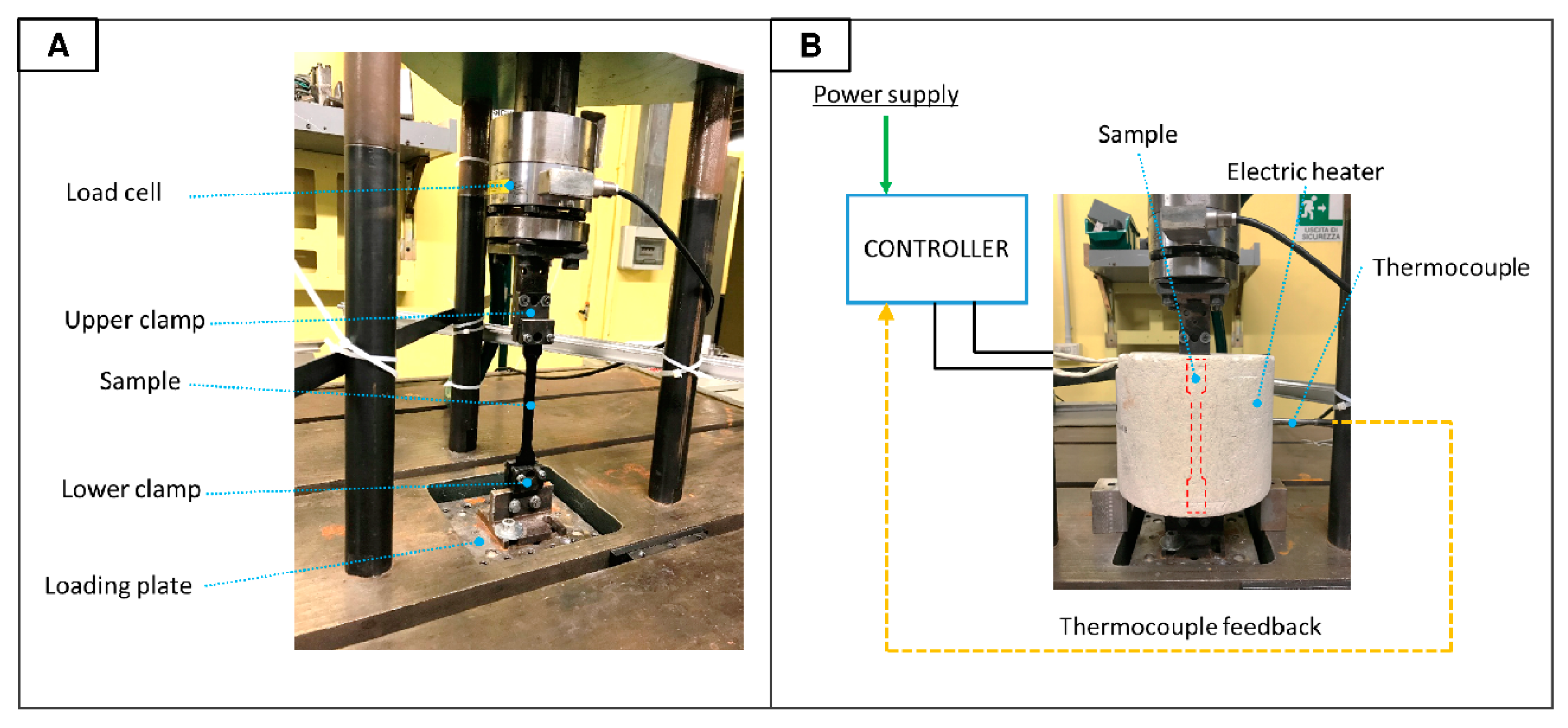

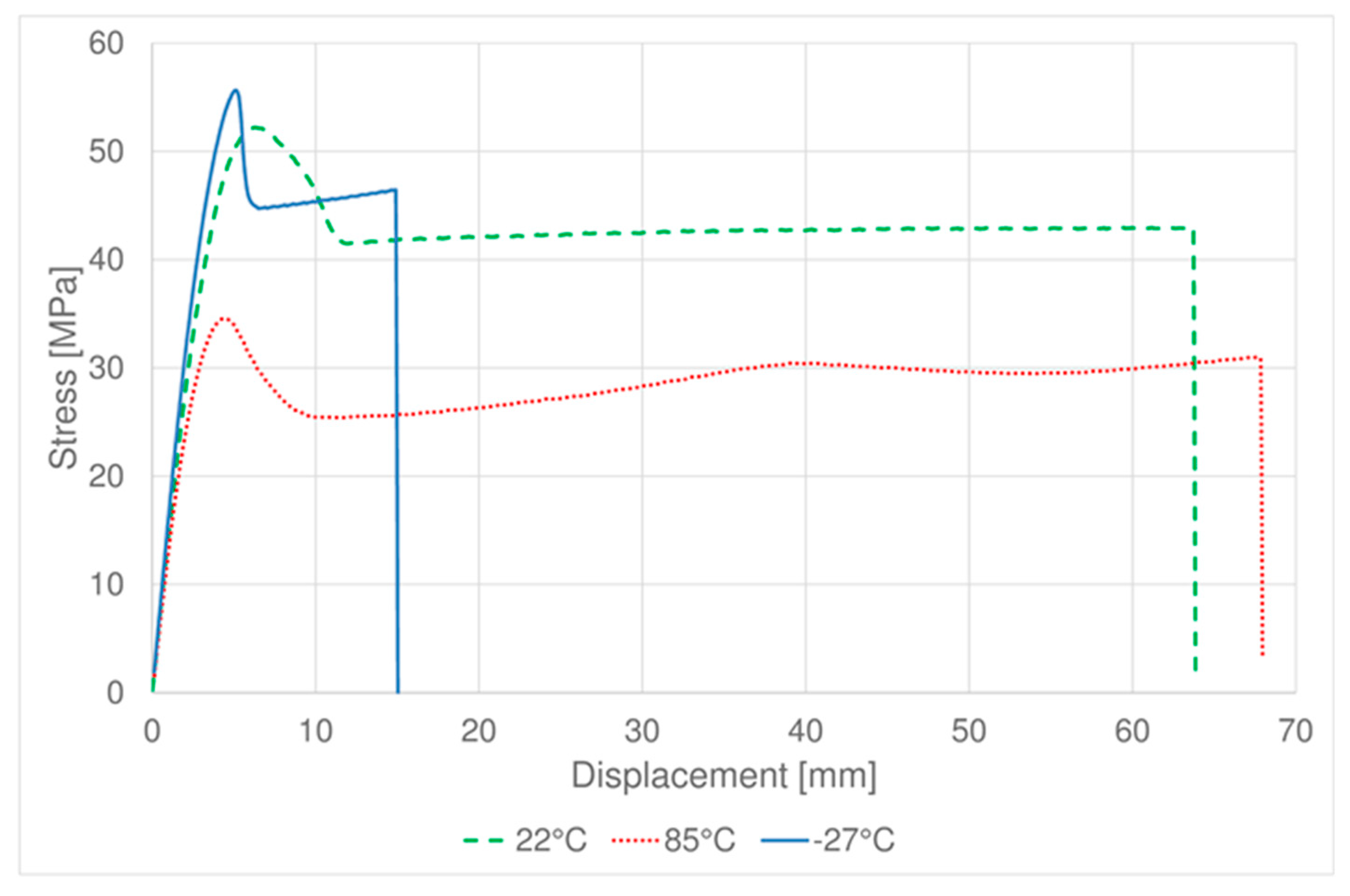
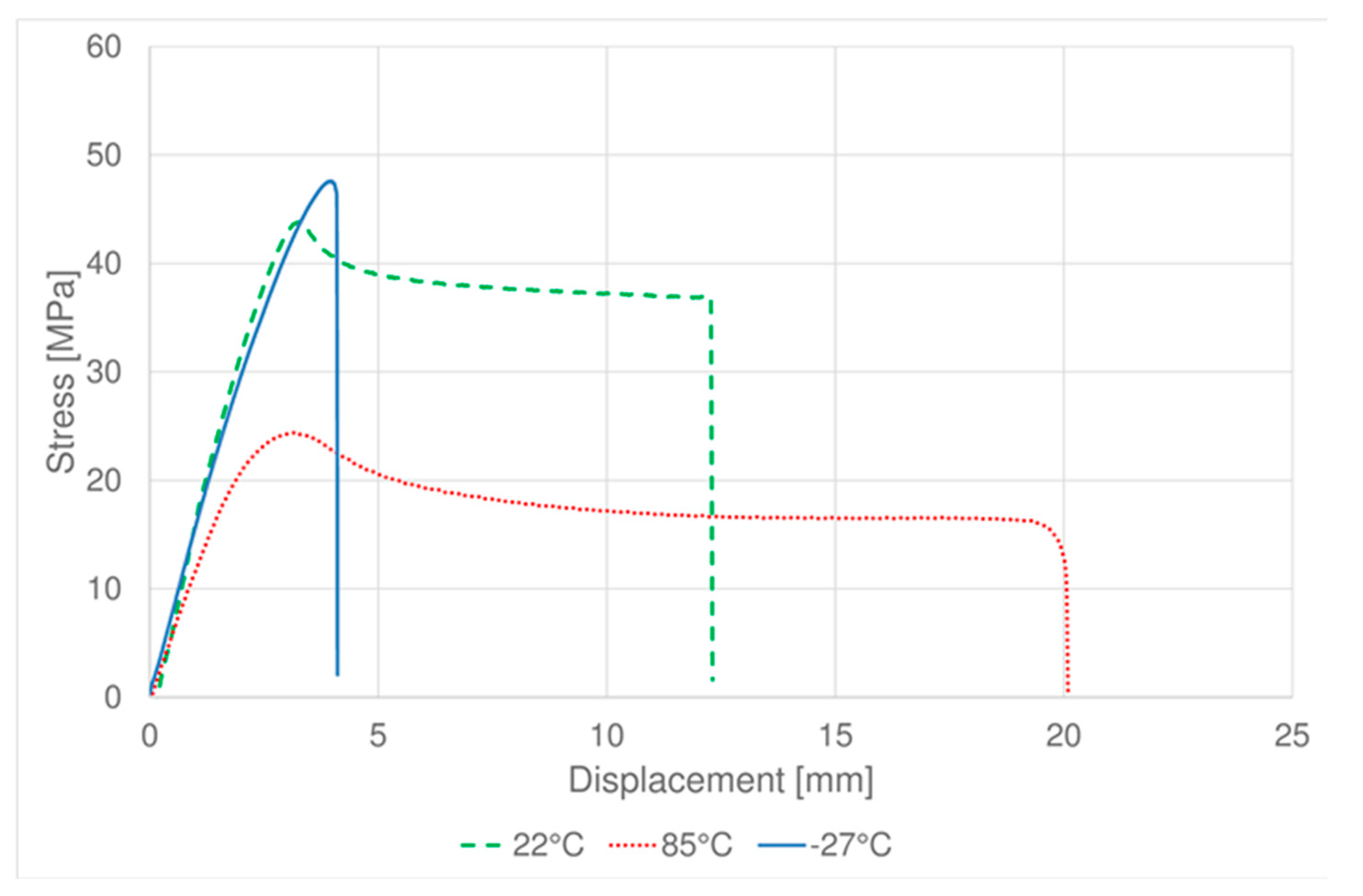
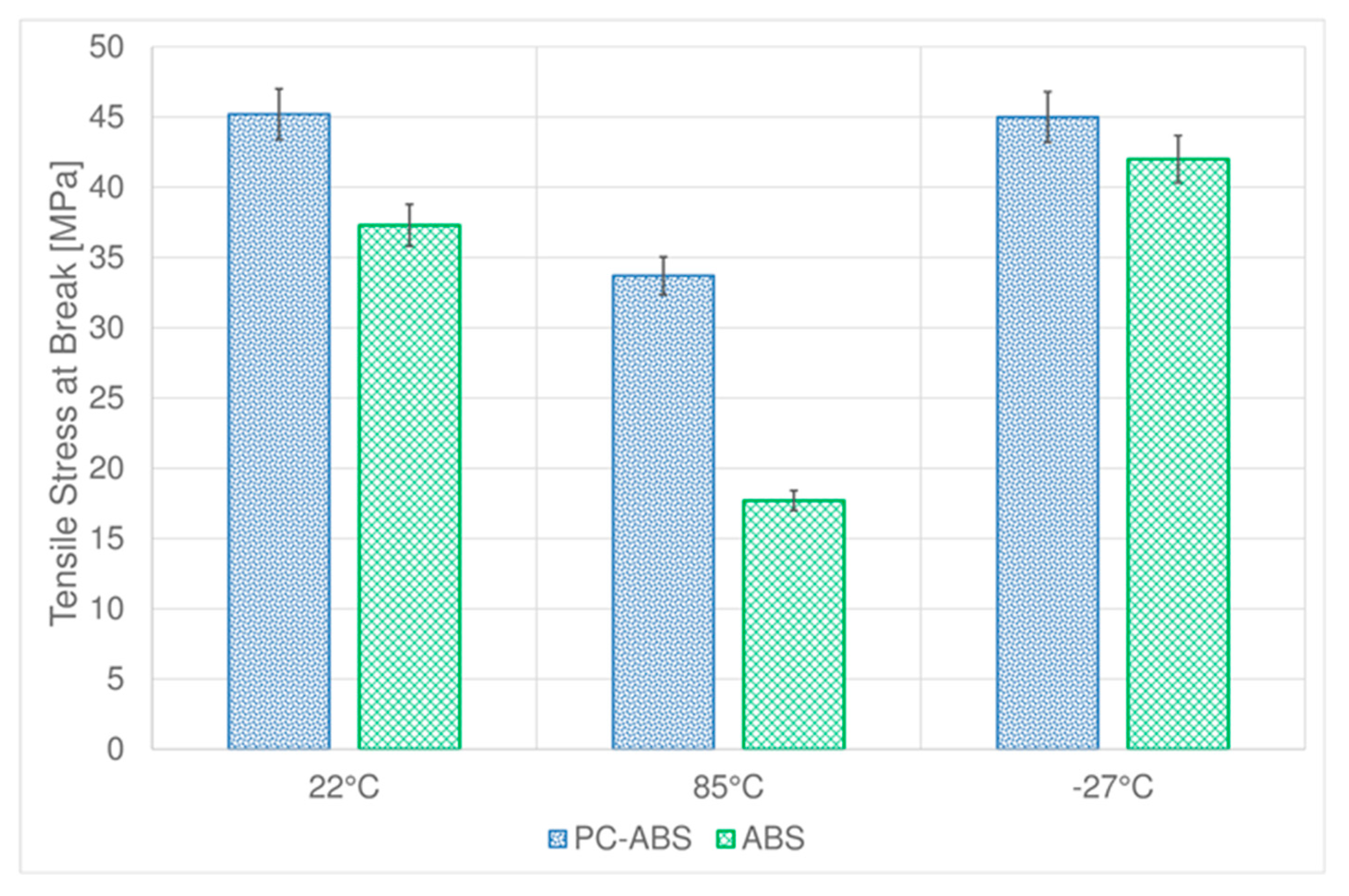
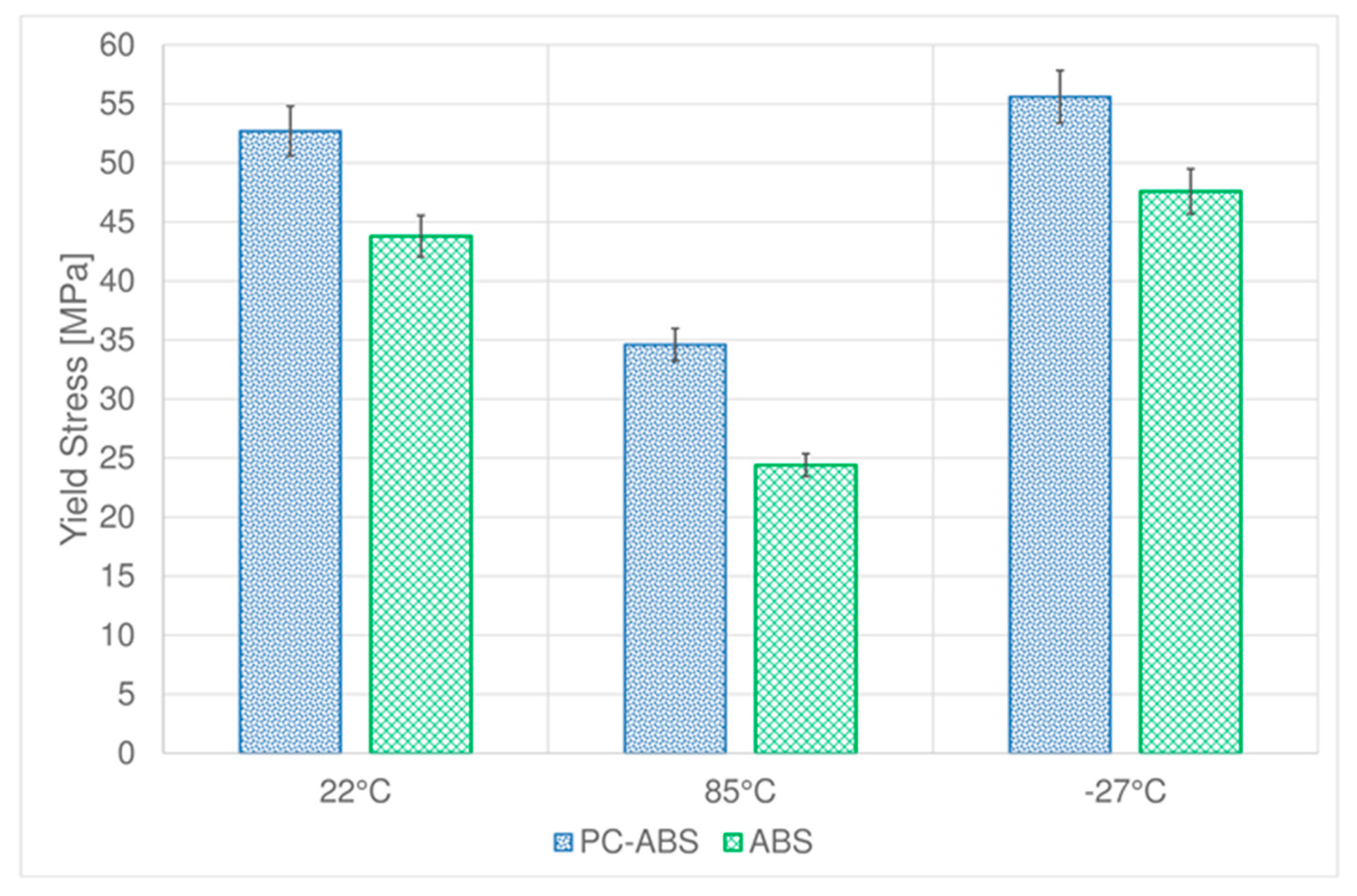
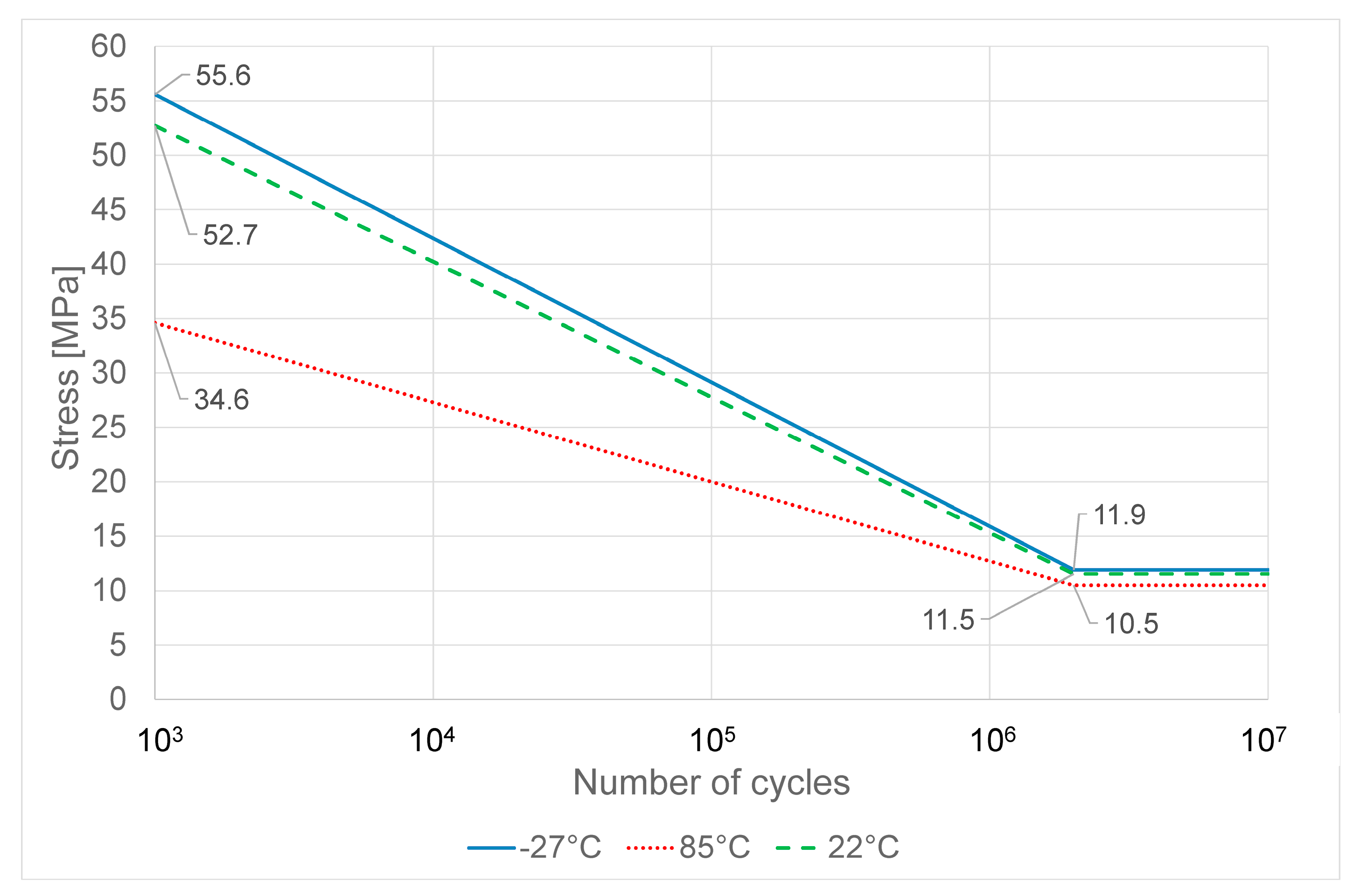
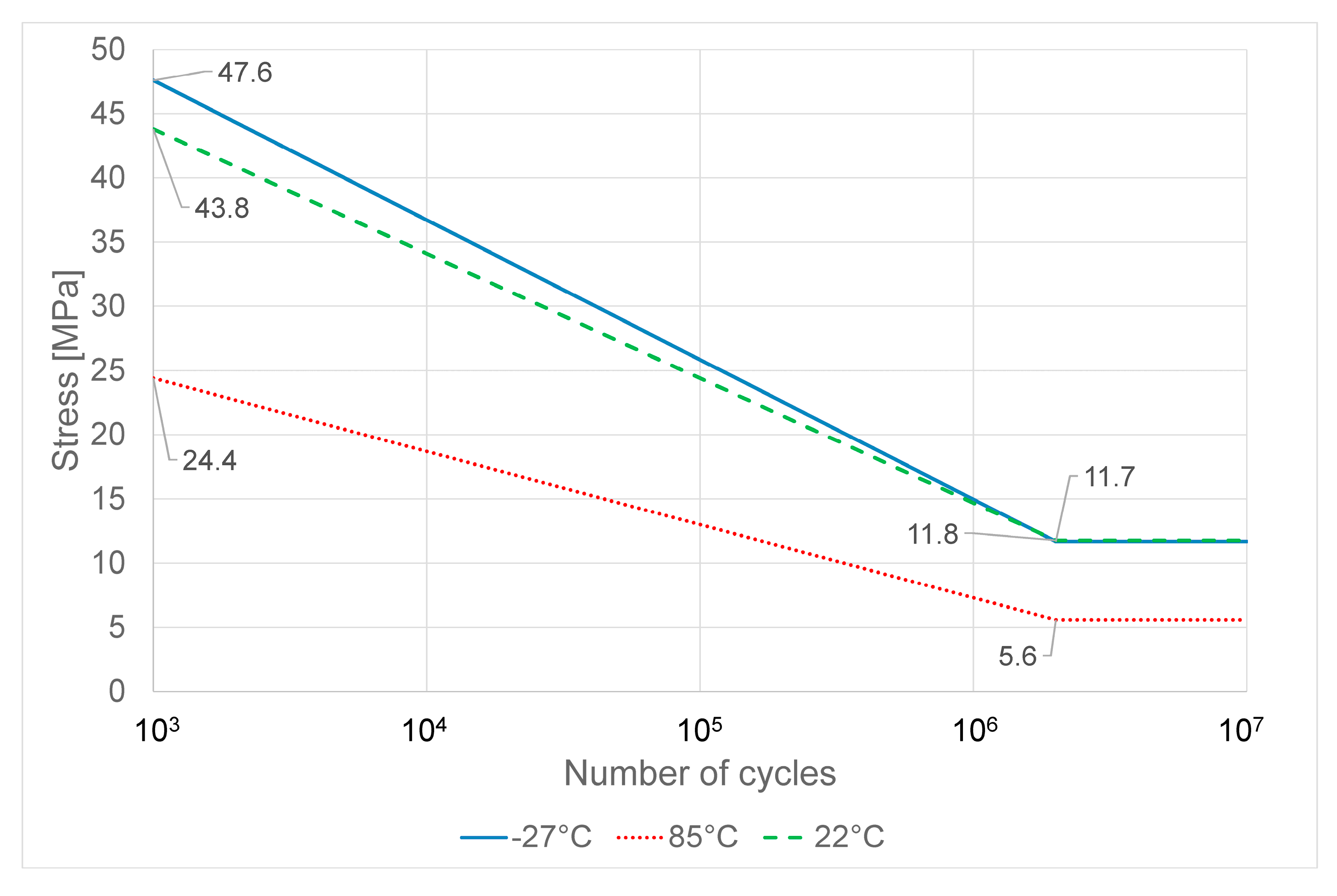
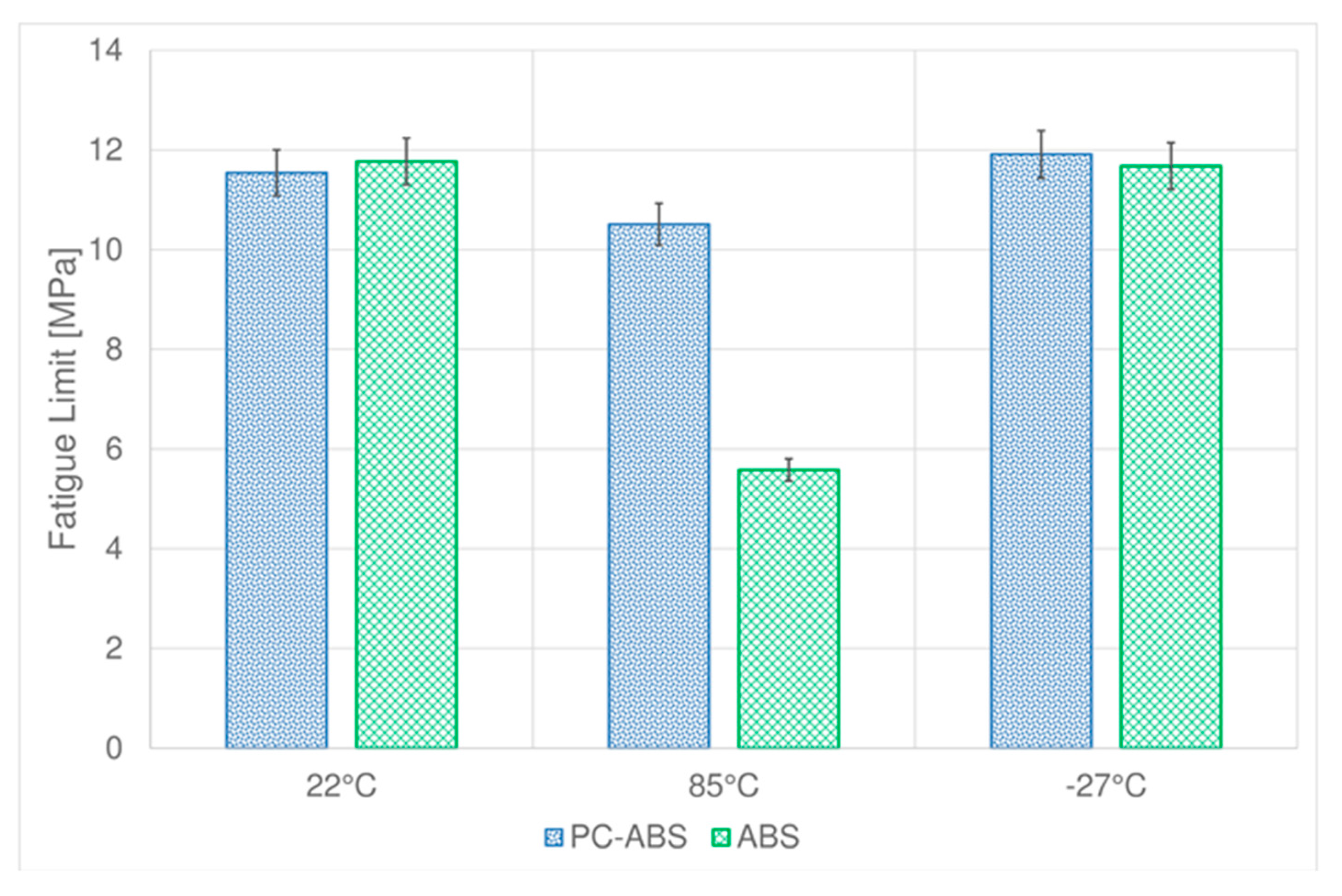
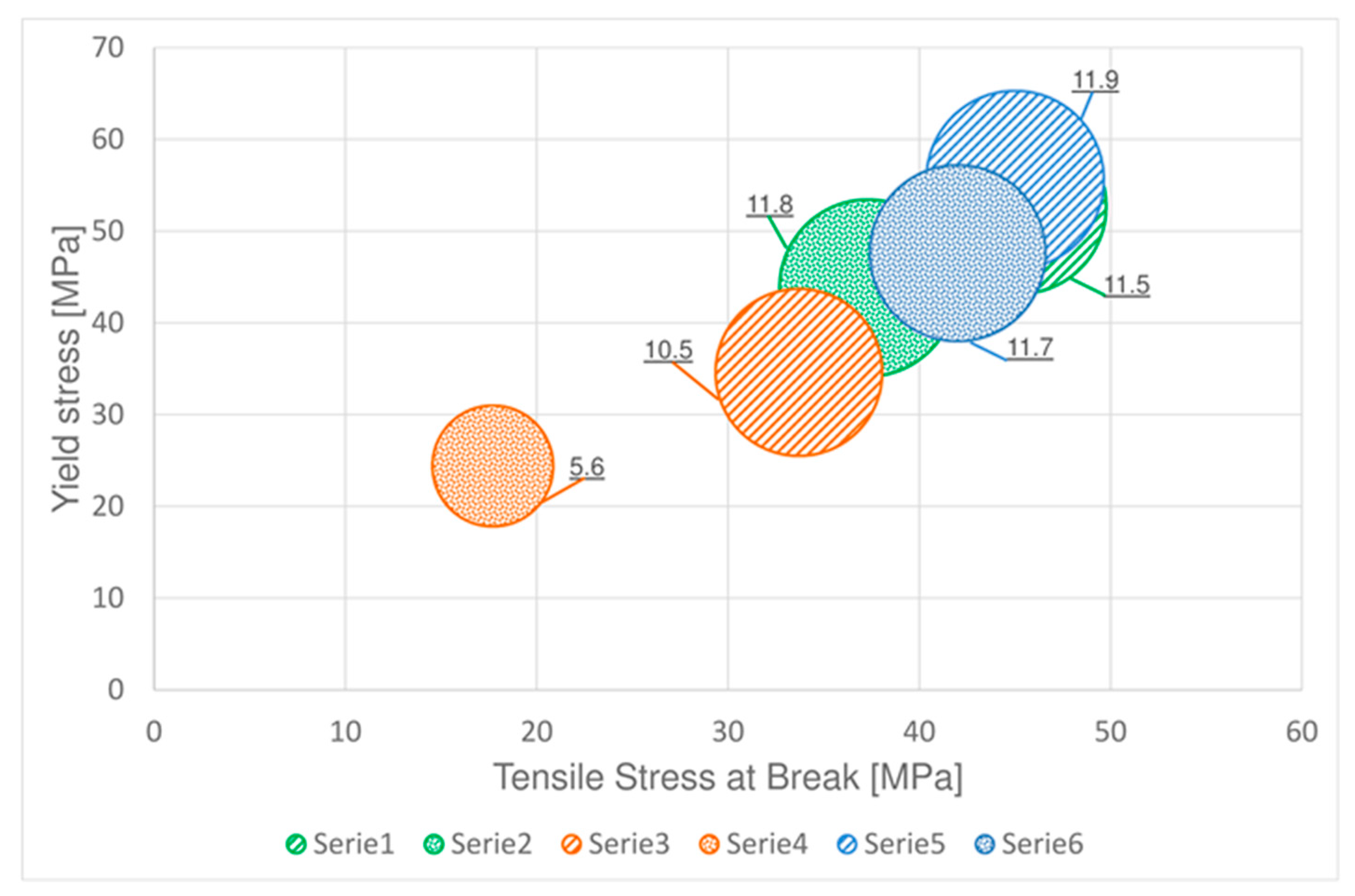
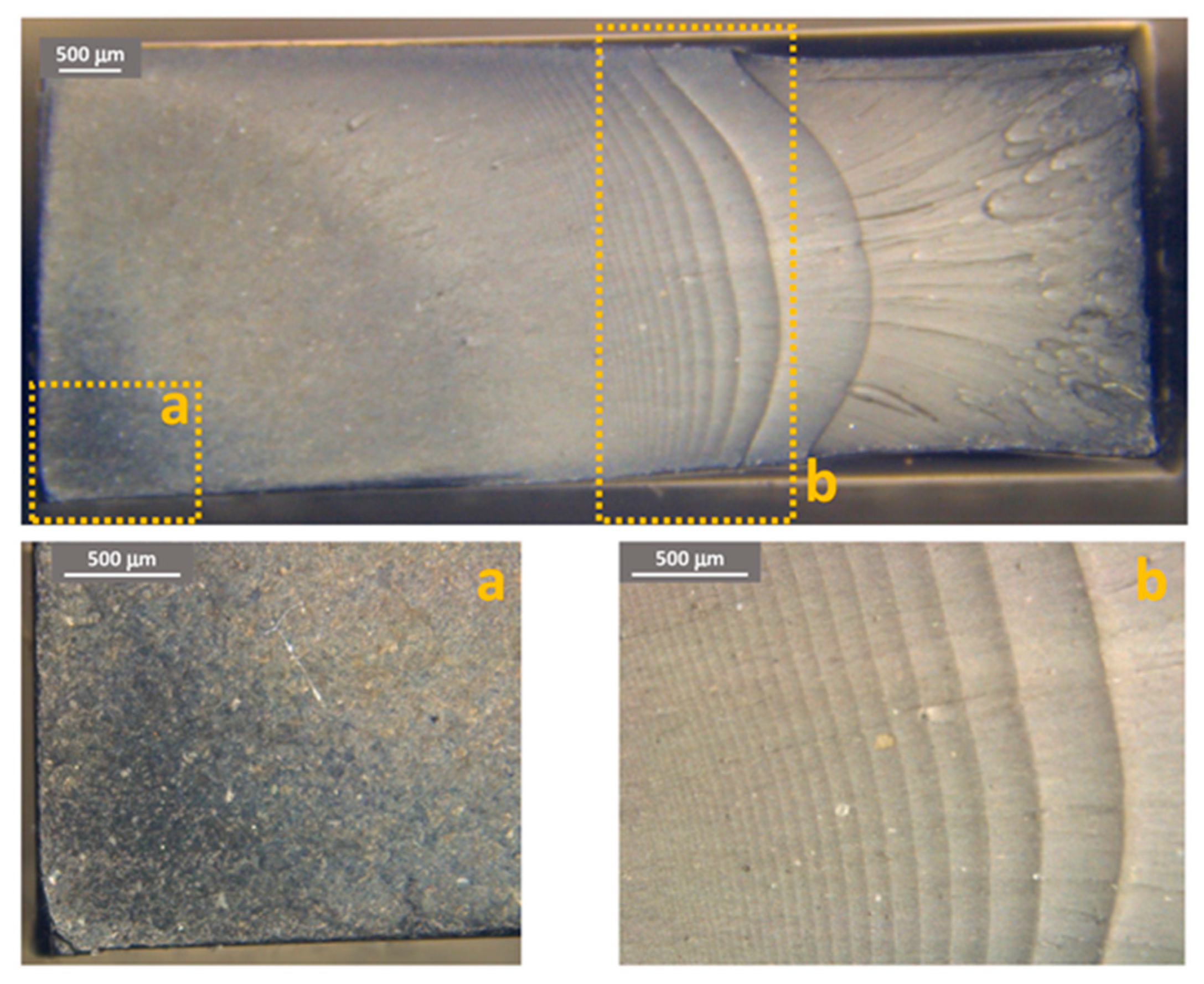



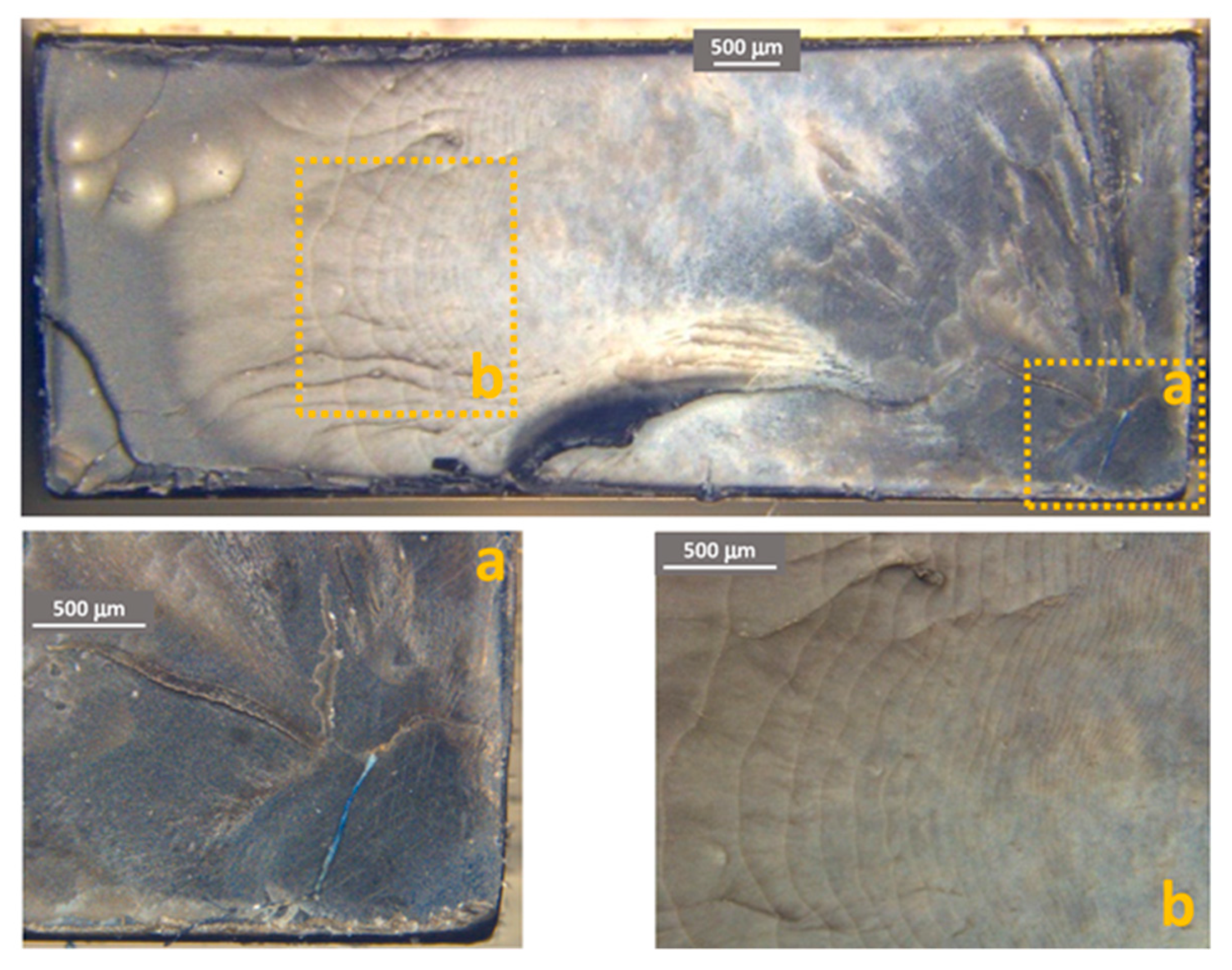

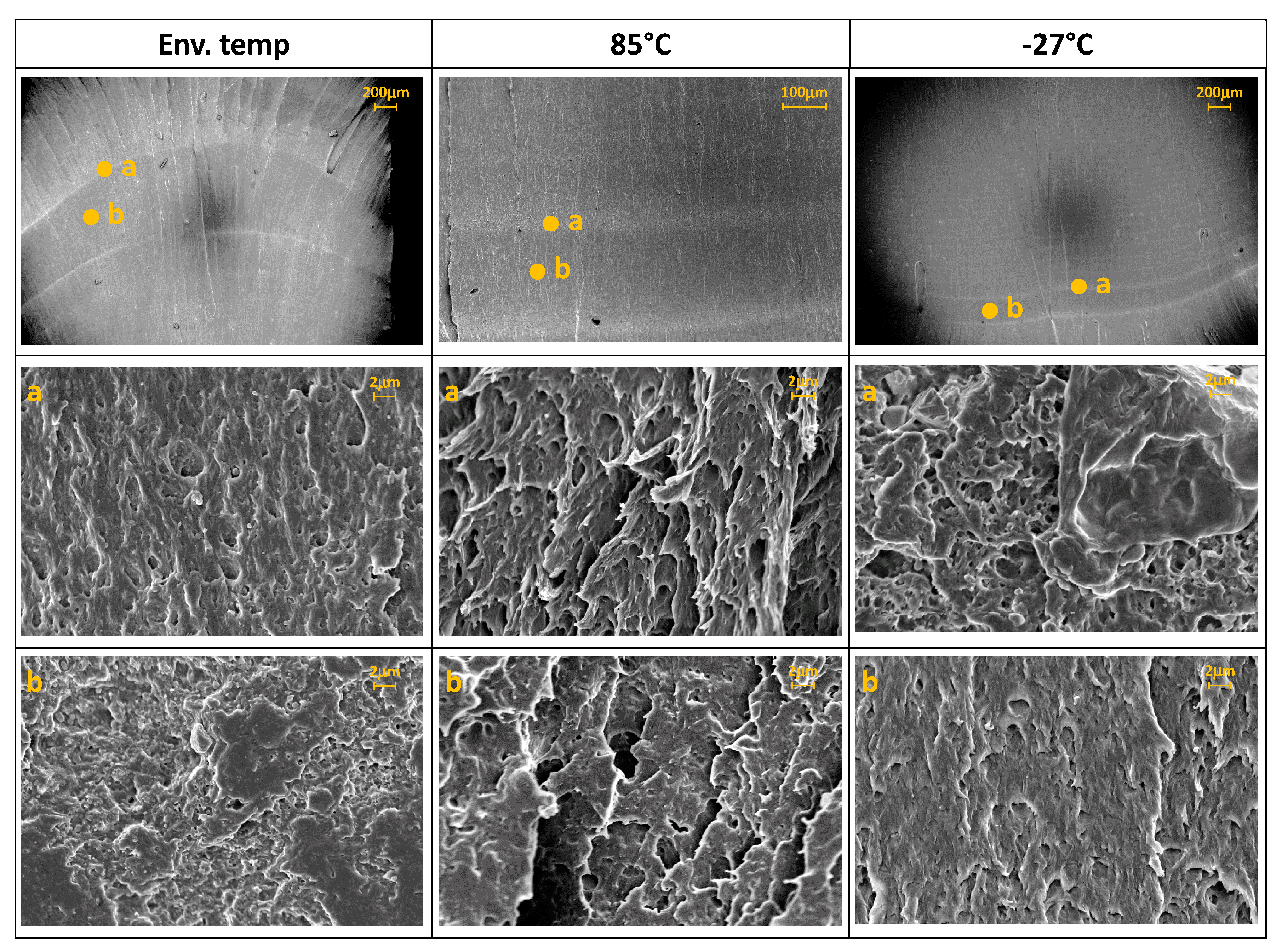

| PC-ABS | ABS | |||||||
|---|---|---|---|---|---|---|---|---|
| Test Temperature (°C) | Stress at Break (MPa) | Standard Deviation | Yield Stress (MPa) | Standard Deviation | Stress at Break (MPa) | Standard Deviation | Yield Stress (MPa) | Standard Deviation |
| 22 | 45.2 | 1.2 | 52.7 | 0.6 | 37.3 | 0.6 | 43.8 | 1.2 |
| 85 | 33.7 | 1.7 | 34.6 | 1.2 | 17.7 | 1.5 | 24.4 | 1.3 |
| −27 | 45.0 | 0.9 | 55.6 | 0.7 | 42.0 | 0.2 | 47.6 | 0.5 |
| PC-ABS | ABS | |||
|---|---|---|---|---|
| Test Temperature (°C) | Fatigue Limit (MPa) | Standard Deviation | Fatigue Limit (MPa) | Standard Deviation |
| 22 | 45.2 | 0.6 | 37.3 | 0.7 |
| 85 | 33.7 | 0.4 | 17.7 | 0.3 |
| −27 | 45.0 | 0.8 | 42.0 | 0.7 |
© 2018 by the authors. Licensee MDPI, Basel, Switzerland. This article is an open access article distributed under the terms and conditions of the Creative Commons Attribution (CC BY) license (http://creativecommons.org/licenses/by/4.0/).
Share and Cite
Mura, A.; Ricci, A.; Canavese, G. Investigation of Fatigue Behavior of ABS and PC-ABS Polymers at Different Temperatures. Materials 2018, 11, 1818. https://doi.org/10.3390/ma11101818
Mura A, Ricci A, Canavese G. Investigation of Fatigue Behavior of ABS and PC-ABS Polymers at Different Temperatures. Materials. 2018; 11(10):1818. https://doi.org/10.3390/ma11101818
Chicago/Turabian StyleMura, Andrea, Alessando Ricci, and Giancarlo Canavese. 2018. "Investigation of Fatigue Behavior of ABS and PC-ABS Polymers at Different Temperatures" Materials 11, no. 10: 1818. https://doi.org/10.3390/ma11101818




